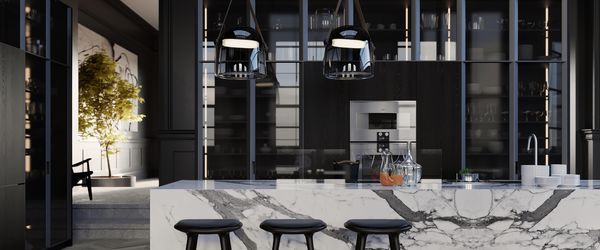
At home with Edin Dzemat
Photography: Matthew Gormly
Chef Edin Dzemat came from Bosnia to Sweden at the age of nine, together with his family. Without knowing anything about the country, language and culture this was definitely a tough start. But as a social person who always sees challenges as opportunities, Edin worked hard and developed his strengths that should lead him to the top of the culinary world within a few years. We meet this fascinating chef at his home in Västervik, a small town on the east coast of Sweden.

Growing up, Edin never had a really strong desire to become a chef, but when he started studying and won a competition at college, the passion for food and cooking took hold. In parallel with his studies, he practised at a well-known address in Sweden, followed by even bigger names in New York, Paris and Copenhagen. With a solid base from these world-class chefs, Edin began developing his own style, combining Swedish flavours and produce with influences from the Balkan. He soon made a name for himself with hotel restaurants, bars and fine dining before his breakthrough with TV competitions.


In his dishes, Edin follows the seasons. That way, the ingredients have the best look, texture, and taste. The concentration on a few, selected ingredients underlines the uniqueness of each dish. "Keep it simple. Don't overdo it." as Edin says, but the so-called irritation is crucial for his philosophy – an unexpected sensation that surprises Edin's guest and makes him pause: "Wow, what is that?" It can be the combination of hot and cold, sweet and sour, creamy and crispy, which gives the dish its very own touch.


When designing the house, it was important to Edin that the kitchen was the focus. It is his place of work and the place where he spends most of his time. That is why the kitchen should also function as a control and communication centre. Edin will notice whether someone comes through the front door, sits in the living room or goes downstairs from the upper floor, even if he is focused on cooking.

A minimalist design with clear lines determines the appearance of the kitchen, be it the floor-to-ceiling black furniture that offers plenty of storage space or the generous work surfaces made of Italian marble. The handleless Gaggenau 400 series and the induction cooktop with the seamlessly integrated ventilation match the reduced kitchen aesthetic perfectly.









